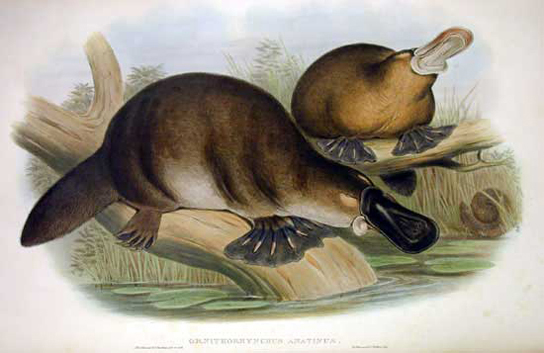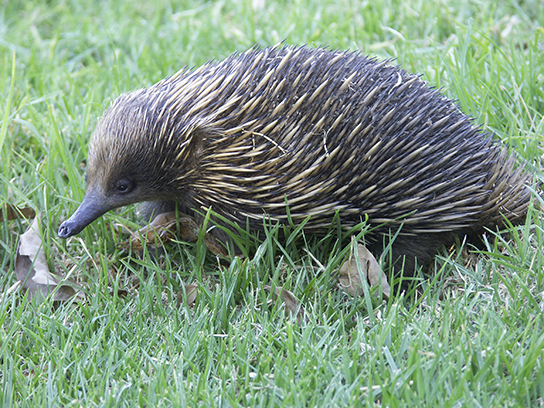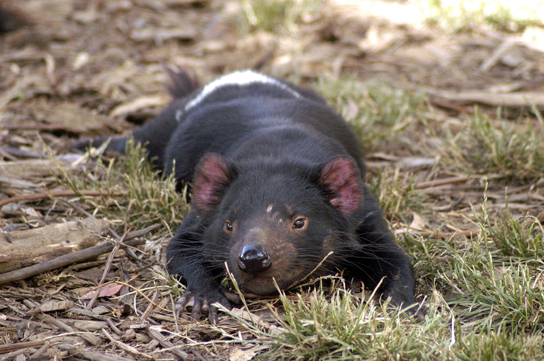| << Chapter < Page | Chapter >> Page > |
In the appendicular skeleton, the shoulder girdle of therian mammals is modified from that of other vertebrates in that it does not possess a procoracoid bone or an interclavicle, and the scapula is the dominant bone.
Mammals evolved from therapsids in the late Triassic period, as the earliest known mammal fossils are from the early Jurassic period, some 205 million years ago. Early mammals were small, about the size of a small rodent. Mammals first began to diversify in the Mesozoic Era, from the Jurassic to the Cretaceous periods, although most of these mammals were extinct by the end of the Mesozoic. During the Cretaceous period, another radiation of mammals began and continued through the Cenozoic Era, about 65 million years ago.
The eutherians, or placental mammals, and the marsupials together comprise the clade of therian mammals. Monotremes, or metatherians, form their sister clade.
There are three living species of monotremes : the platypus and two species of echidnas, or spiny anteaters. The leathery-beaked platypus belongs to the family Ornithorhynchidae (“bird beak”), whereas echidnas belong to the family Tachyglossidae (“sticky tongue”) ( [link] ). The platypus and one species of echidna are found in Australia, and the other species of echidna is found in New Guinea. Monotremes are unique among mammals as they lay eggs, rather than giving birth to live young. The shells of their eggs are not like the hard shells of birds, but are a leathery shell, similar to the shells of reptile eggs. Monotremes have no teeth.


Marsupials are found primarily in Australia, though the opossum is found in North America. Australian marsupials include the kangaroo, koala, bandicoot, Tasmanian devil ( [link] ), and several other species. Most species of marsupials possess a pouch in which the very premature young reside after birth, receiving milk and continuing to develop. Marsupials differ from eutherians in that there is a less complex placental connection: The young are born at an extremely early age and latch onto the nipple within the pouch.

Eutherians are the most widespread of the mammals, occurring throughout the world. There are 18 to 20 orders of placental mammals. Some examples are Insectivora, the insect eaters; Edentata, the toothless anteaters; Rodentia, the rodents; Cetacea, the aquatic mammals including whales; Carnivora, carnivorous mammals including dogs, cats, and bears; and Primates, which includes humans. Eutherian mammals are sometimes called placental mammals because all species possess a complex placenta that connects a fetus to the mother, allowing for gas, fluid, and nutrient exchange. While other mammals possess a less complex placenta or briefly have a placenta, all eutherians possess a complex placenta during gestation.
Mammals in general are vertebrates that possess hair and mammary glands. The mammalian integument includes various secretory glands, including sebaceous glands, eccrine glands, apocrine glands, and mammary glands. Mammals are synapsids, meaning that they have a single opening in the skull. A key characteristic of synapsids is endothermy rather than the ectothermy seen in other vertebrates. Mammals probably evolved from therapsids in the late Triassic period, as the earliest known mammal fossils are from the early Jurassic period. There are three groups of mammals living today: monotremes, marsupials, and eutherians. Monotremes are unique among mammals as they lay eggs, rather than giving birth to young. Eutherian mammals are sometimes called placental mammals, because all species possess a complex placenta that connects a fetus to the mother, allowing for gas, fluid, and nutrient exchange.

Notification Switch
Would you like to follow the 'Biology' conversation and receive update notifications?